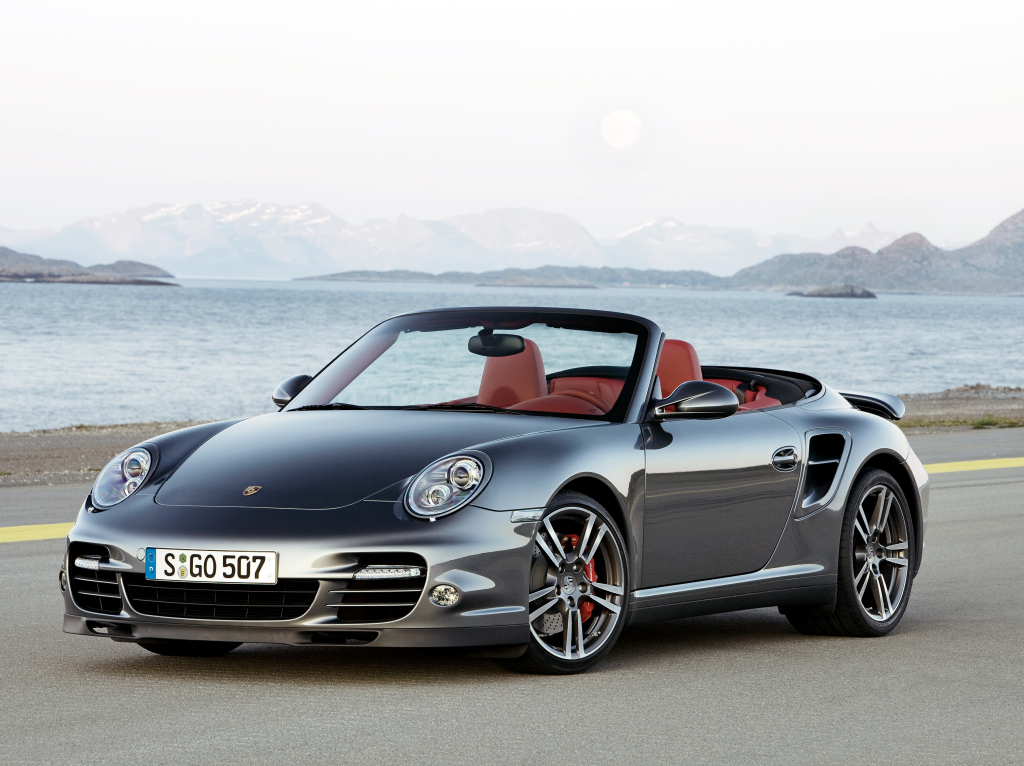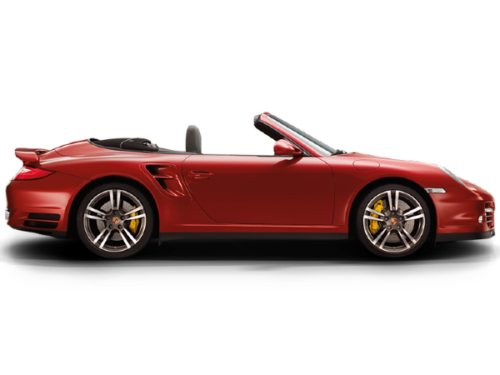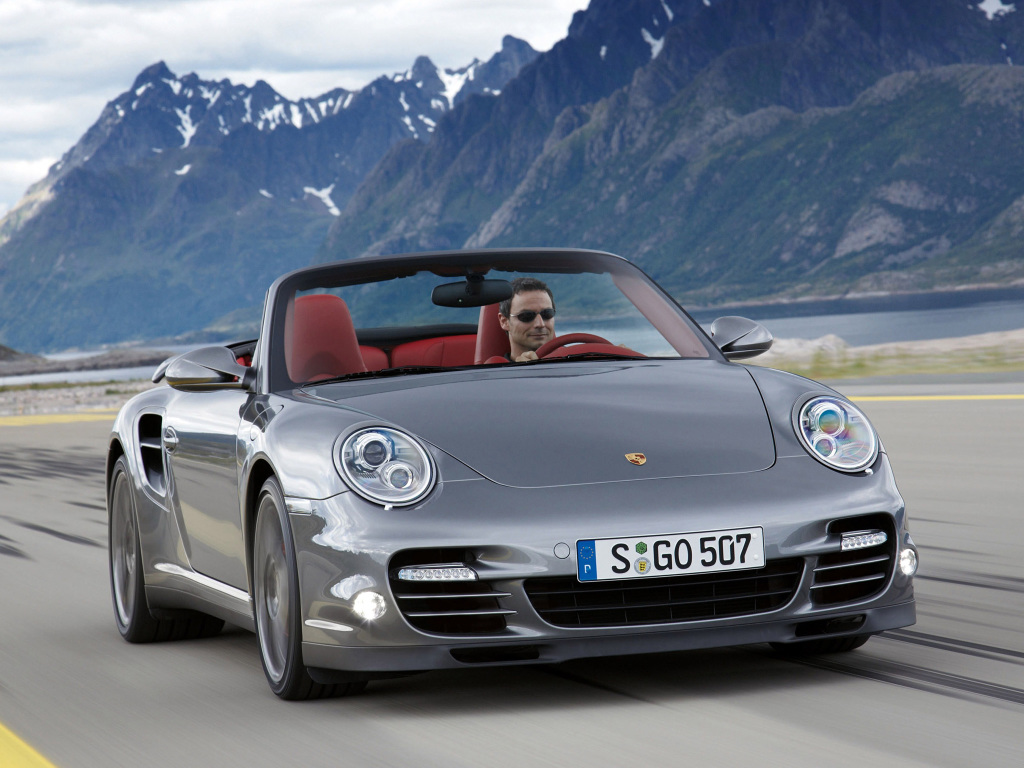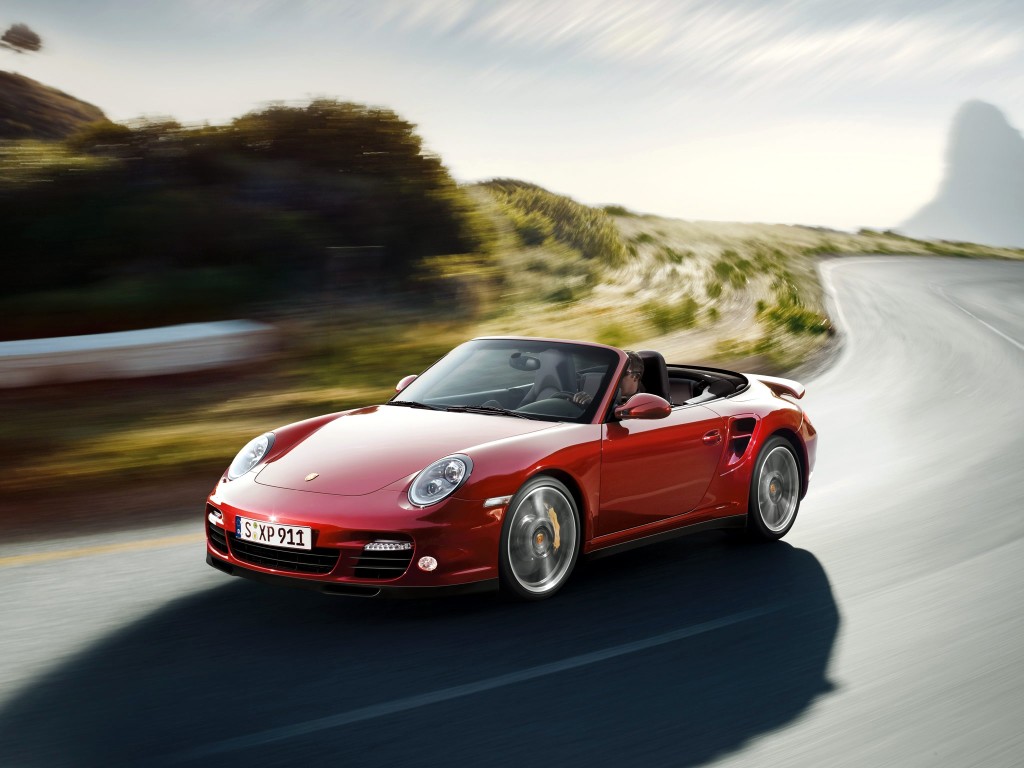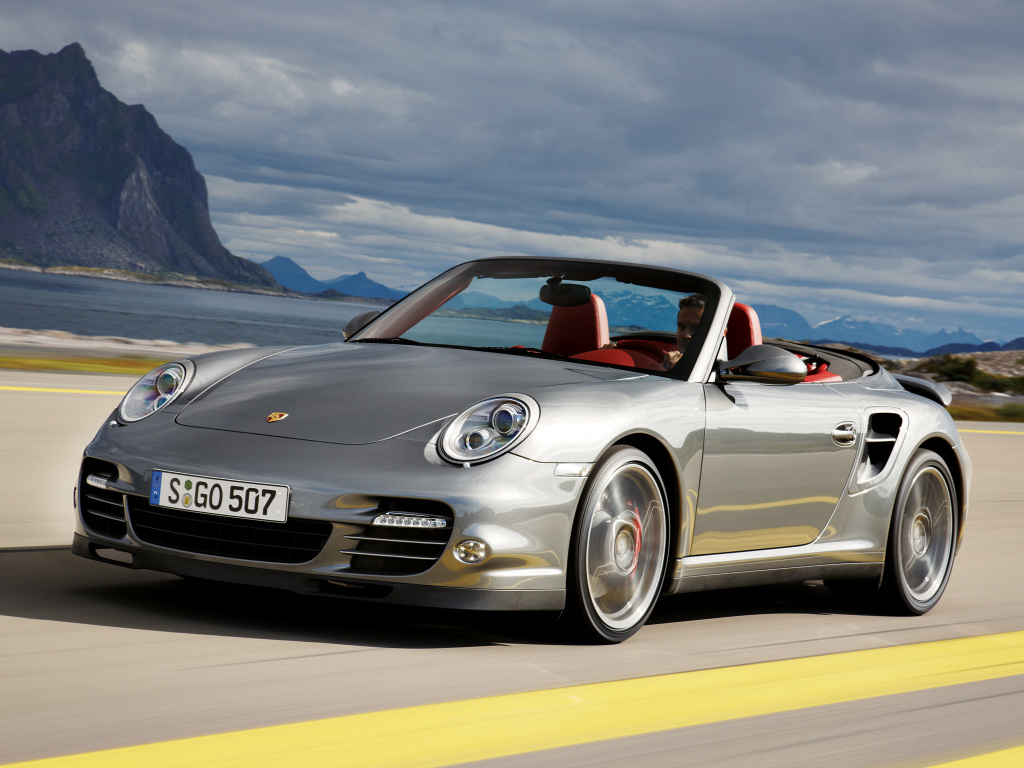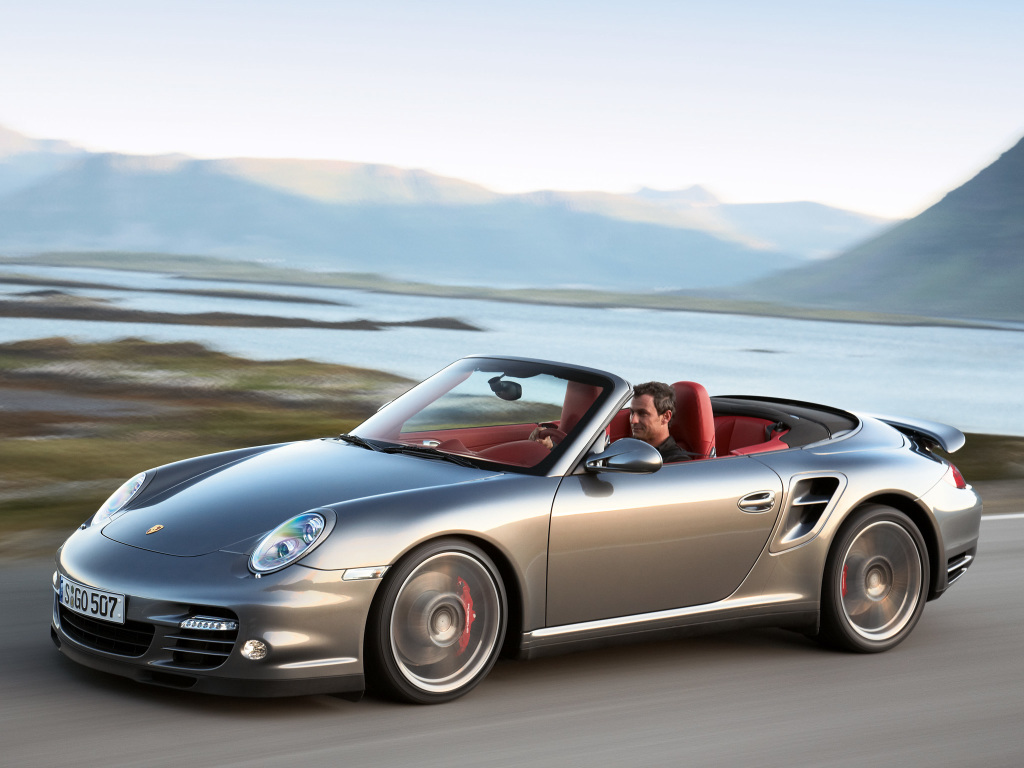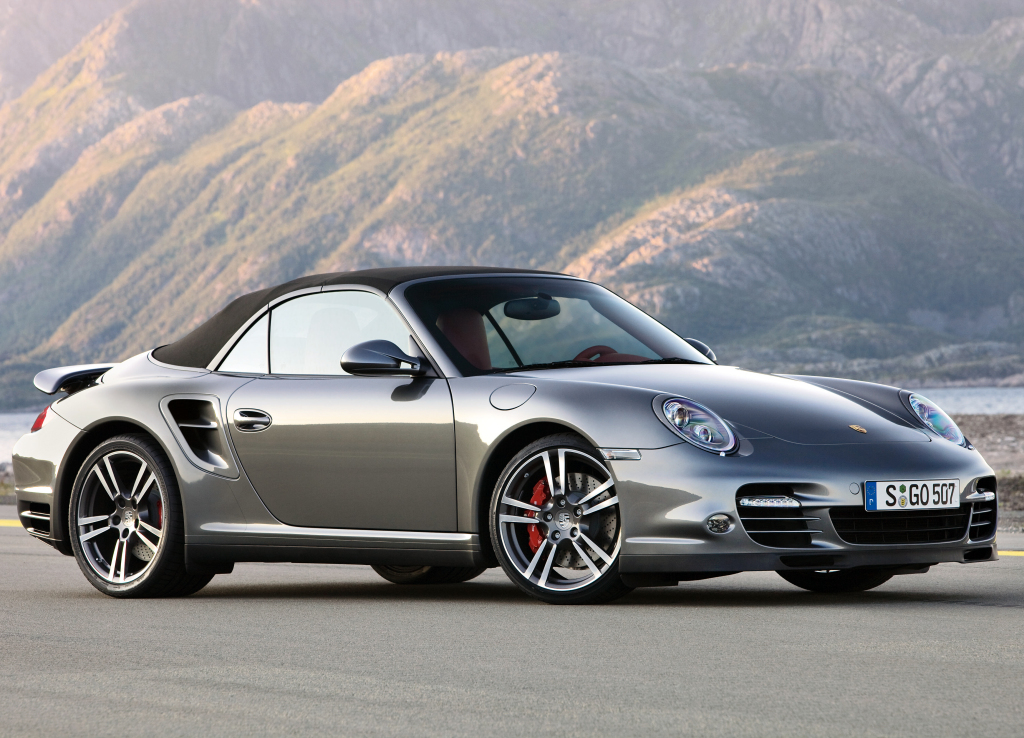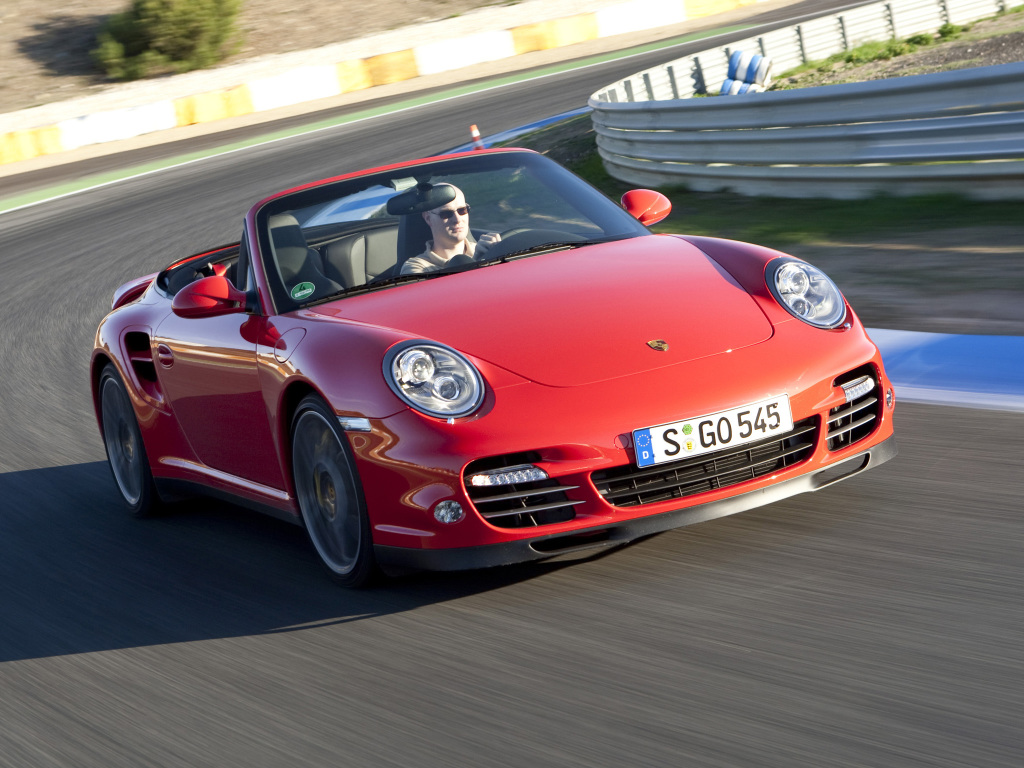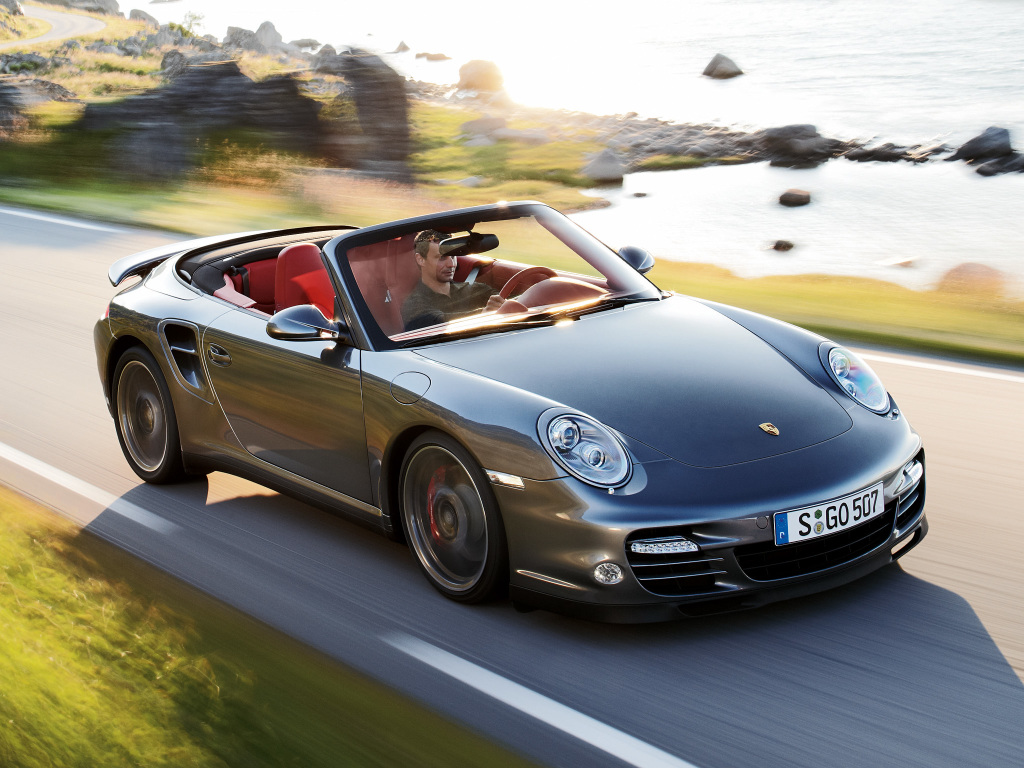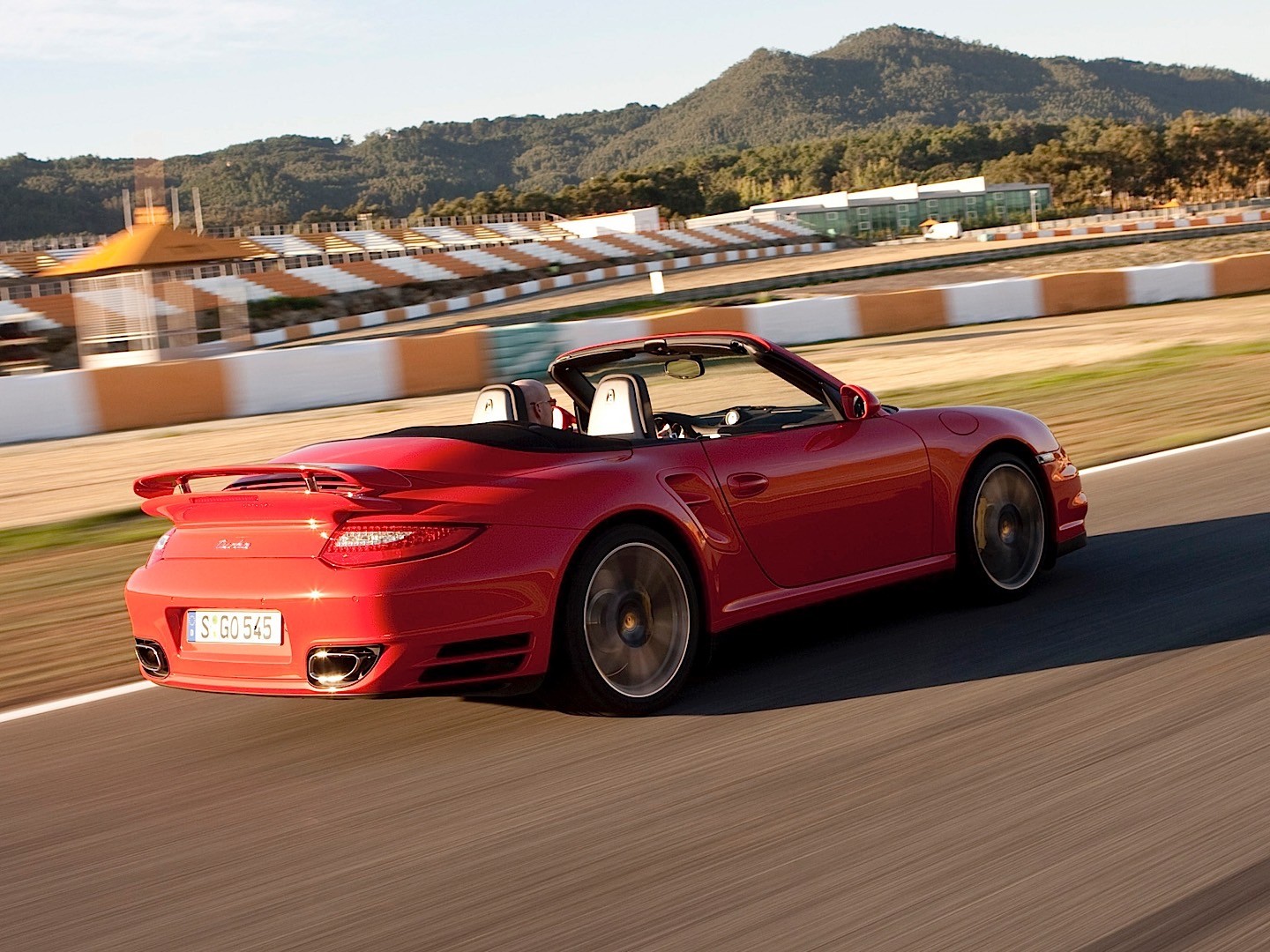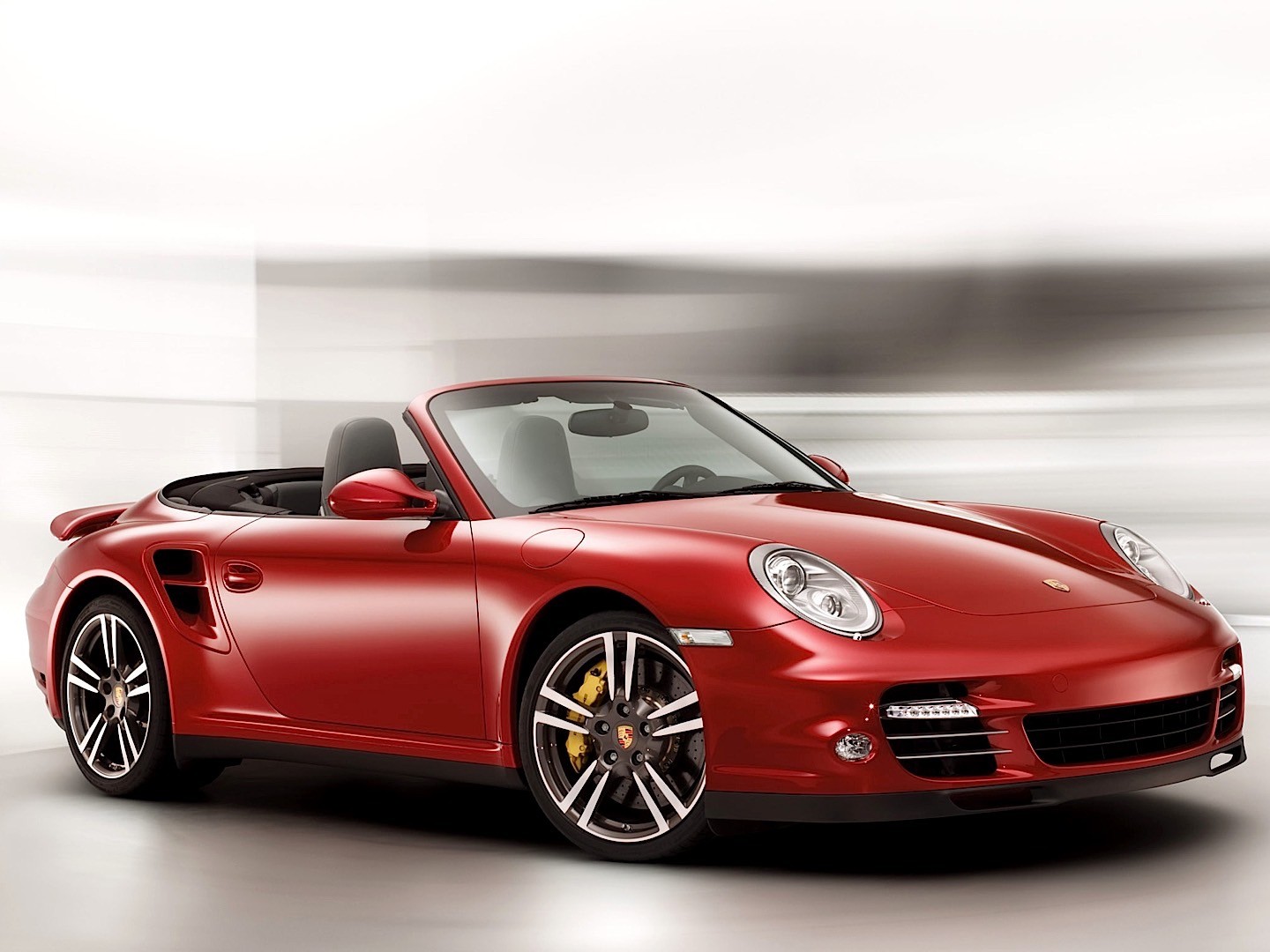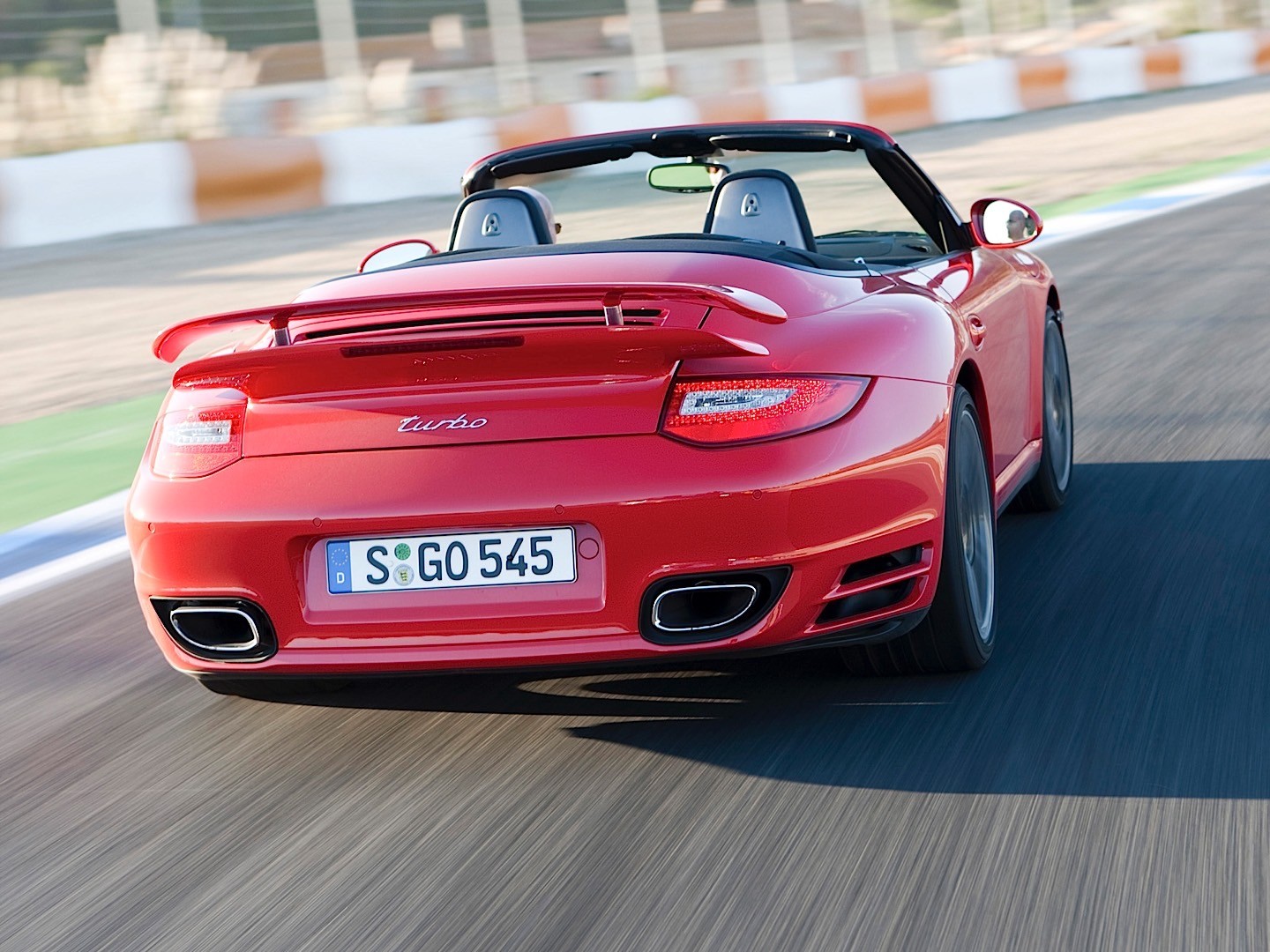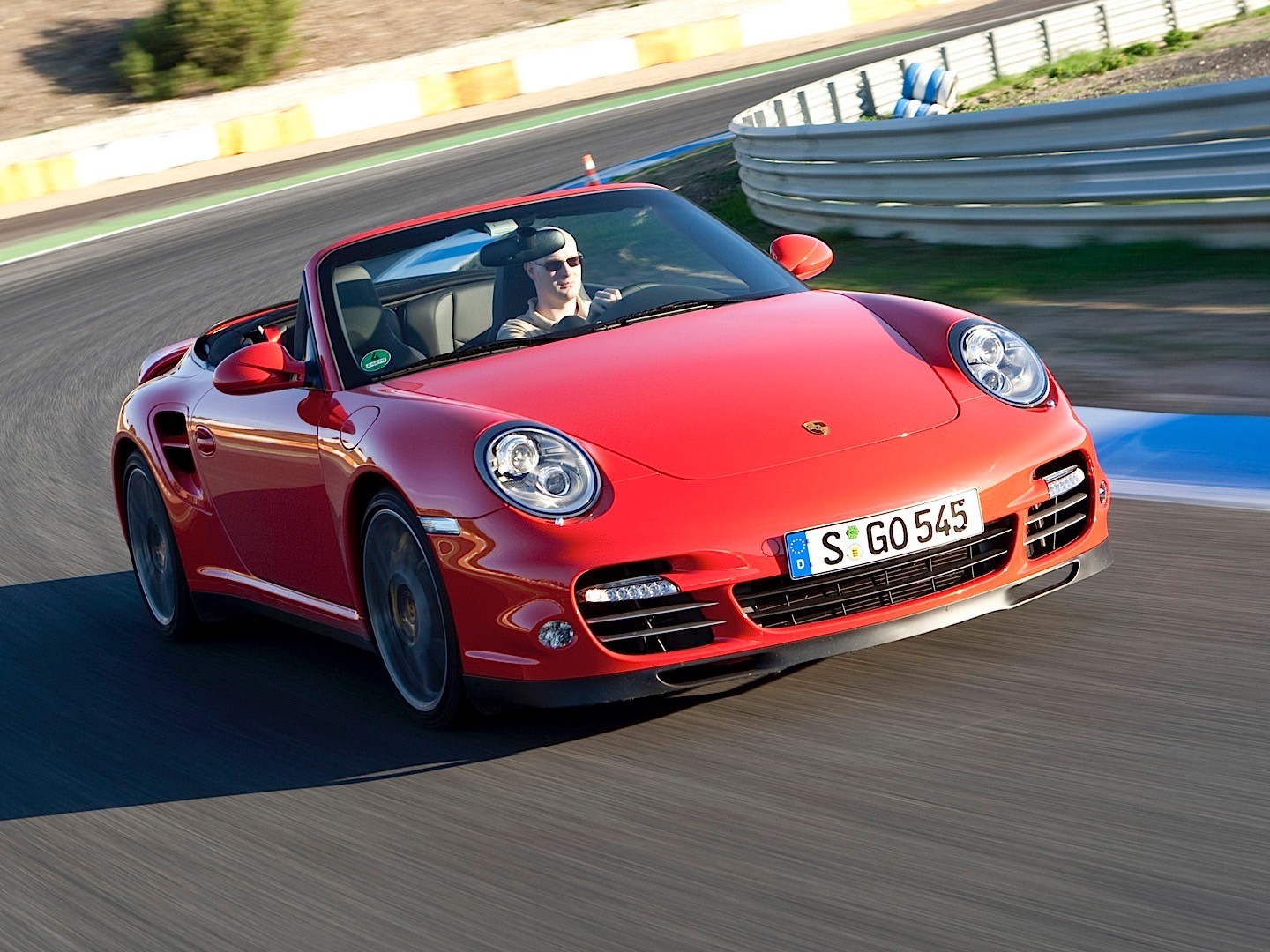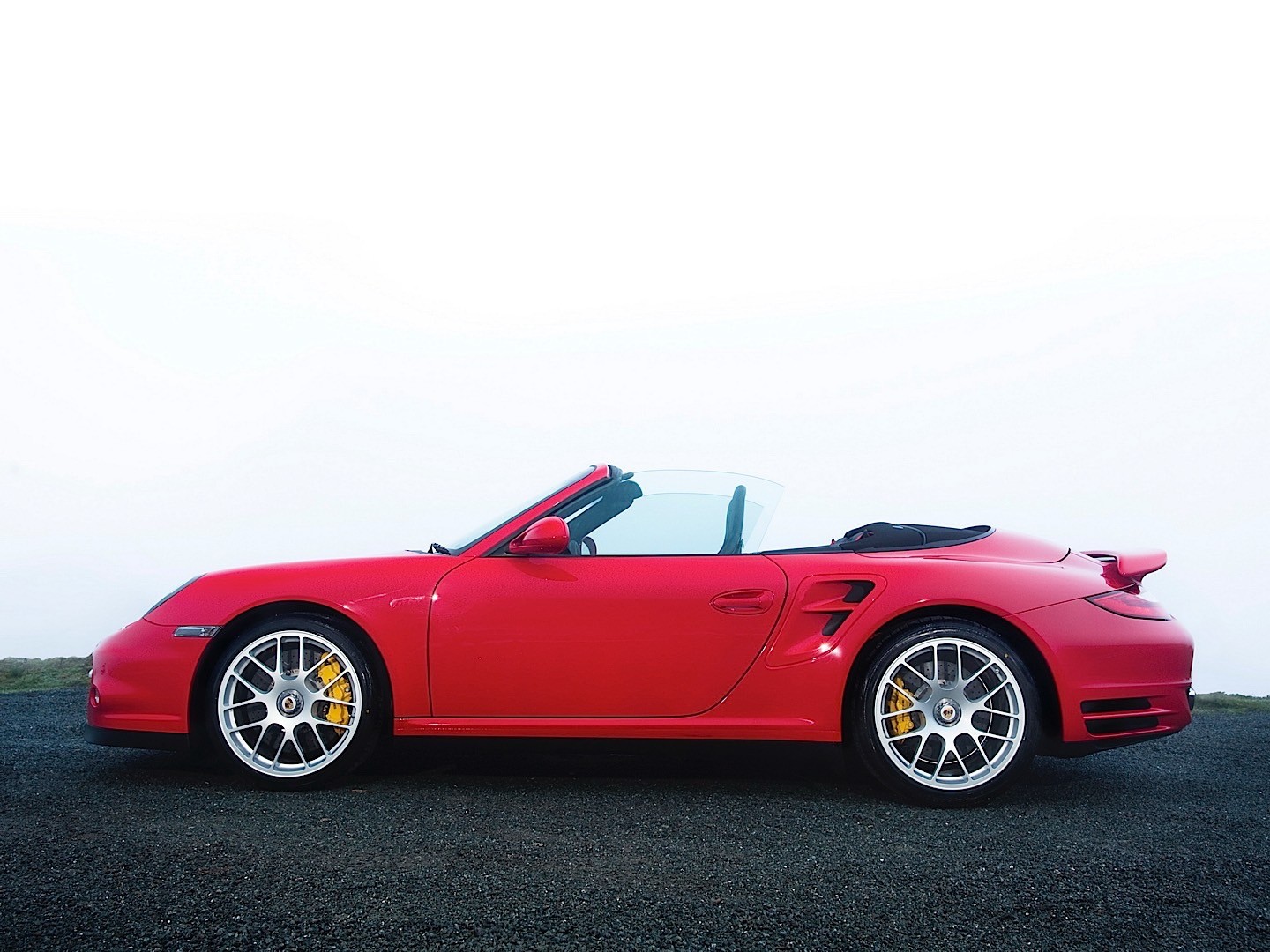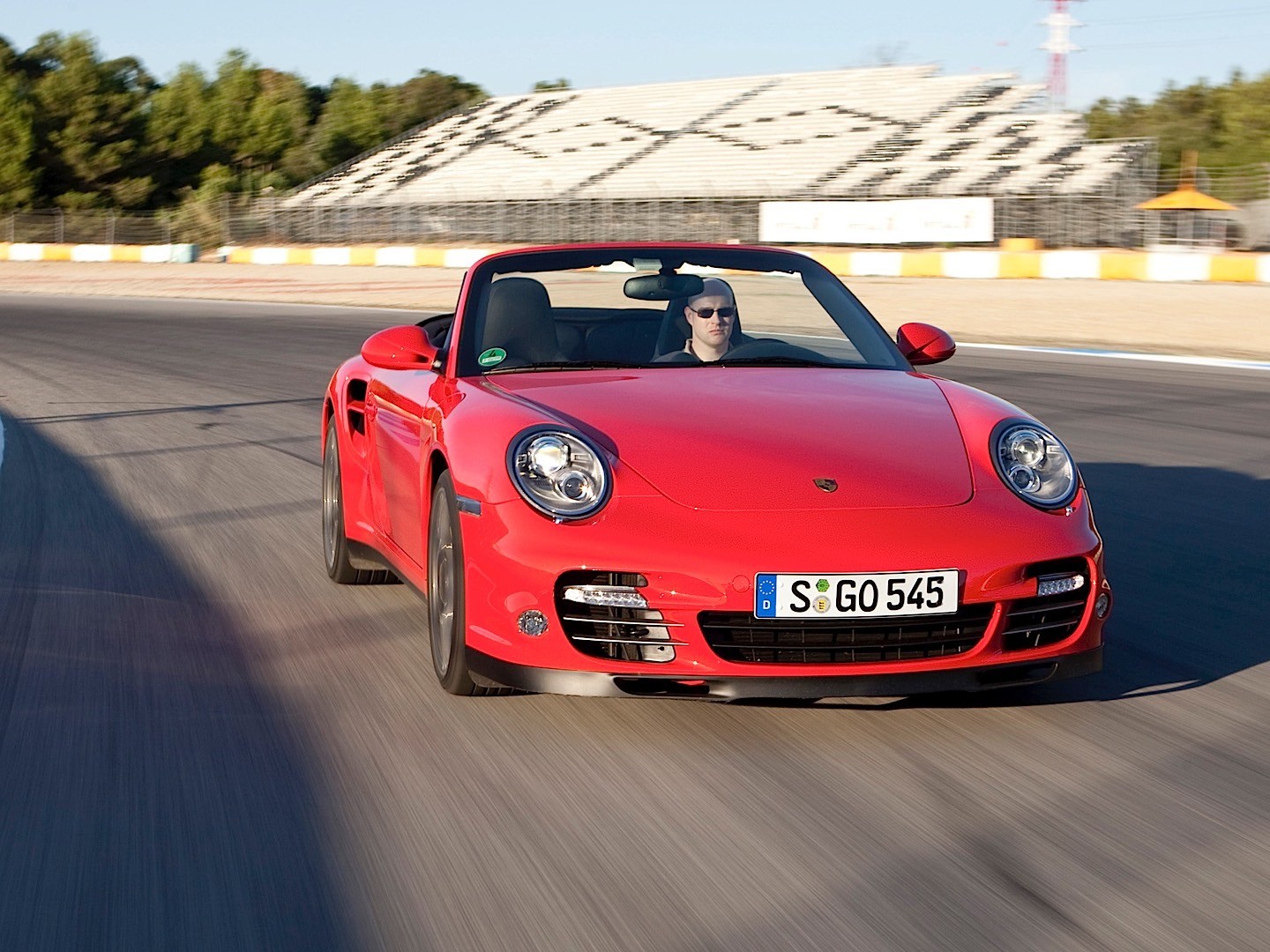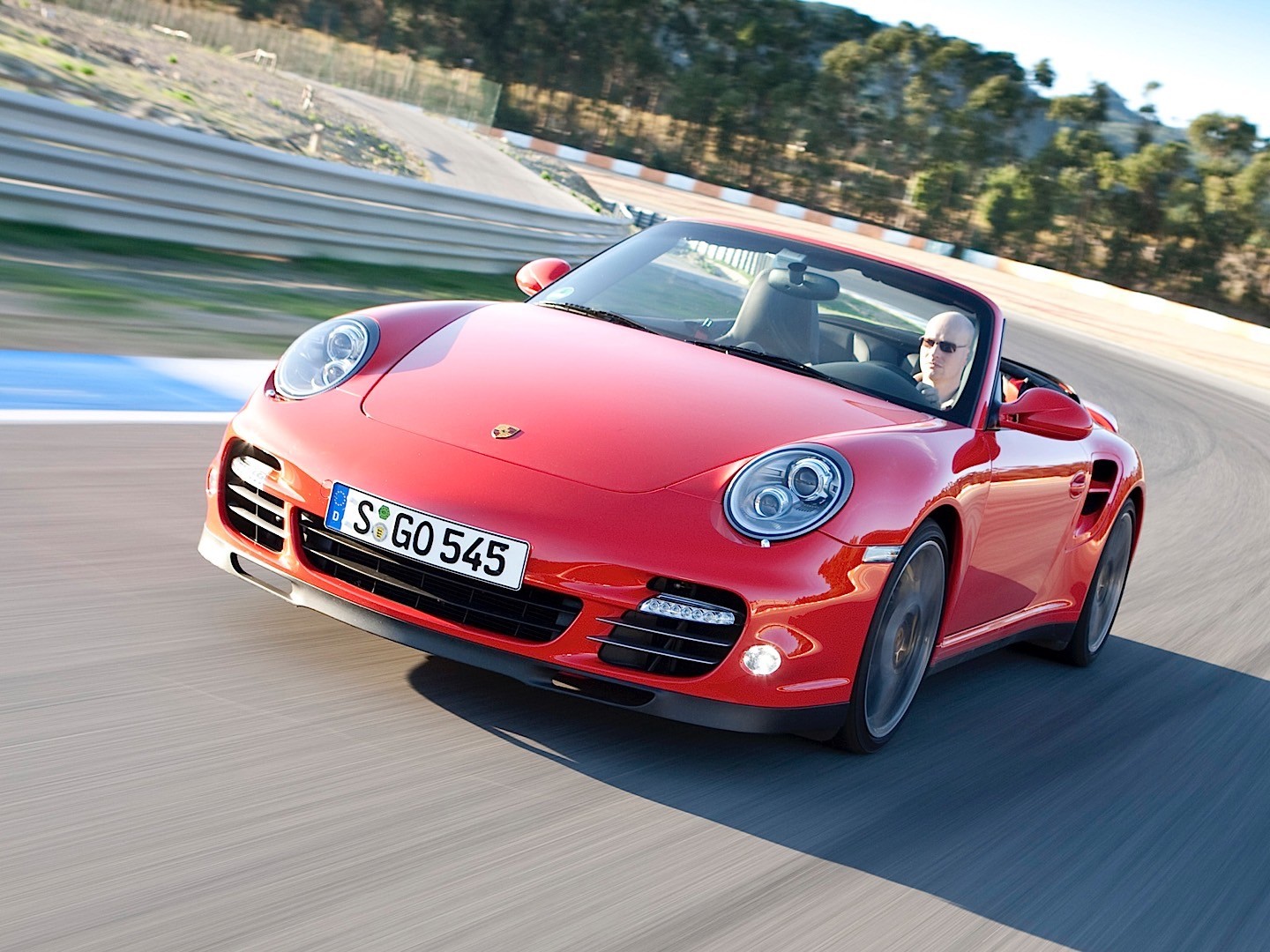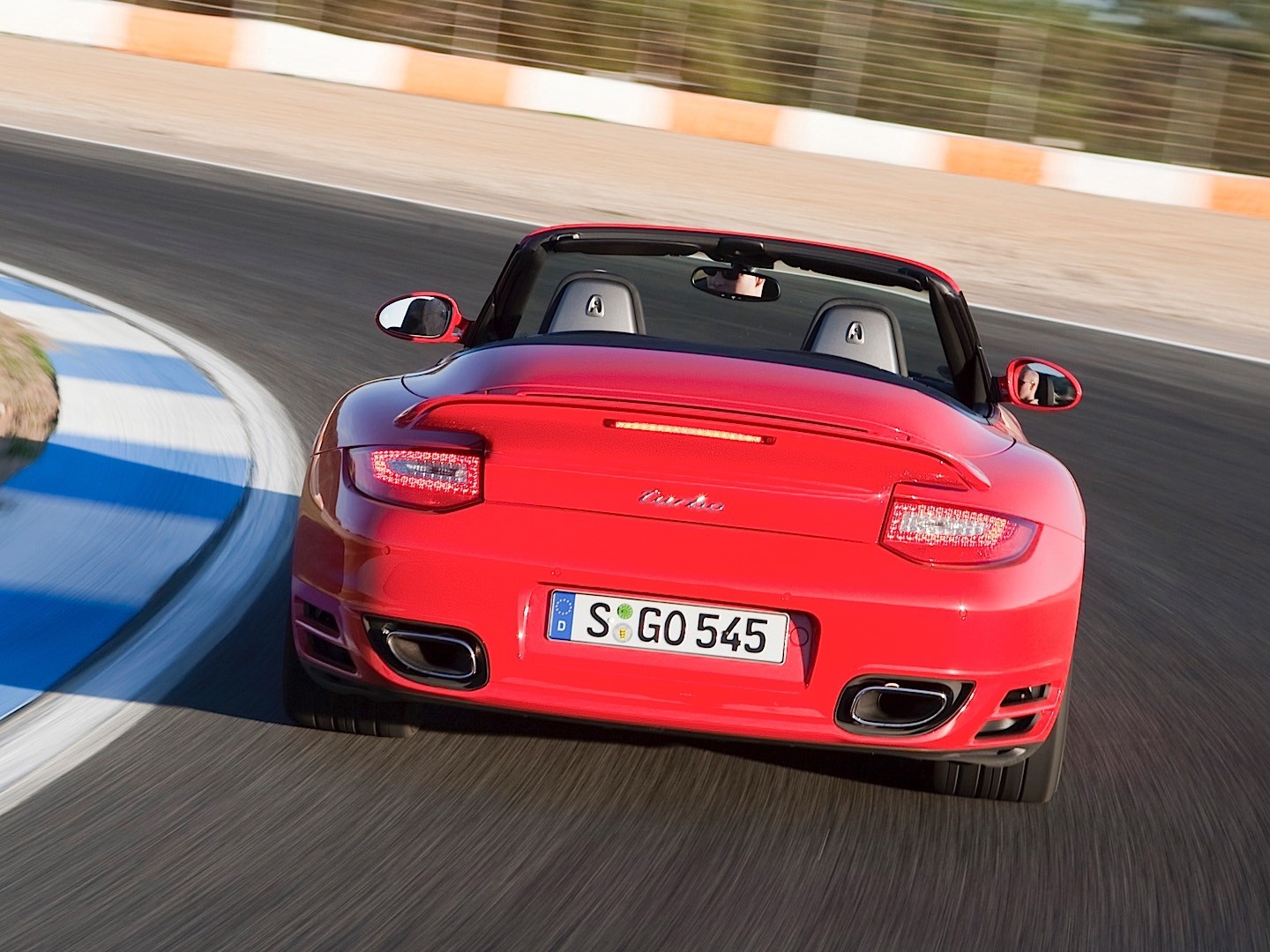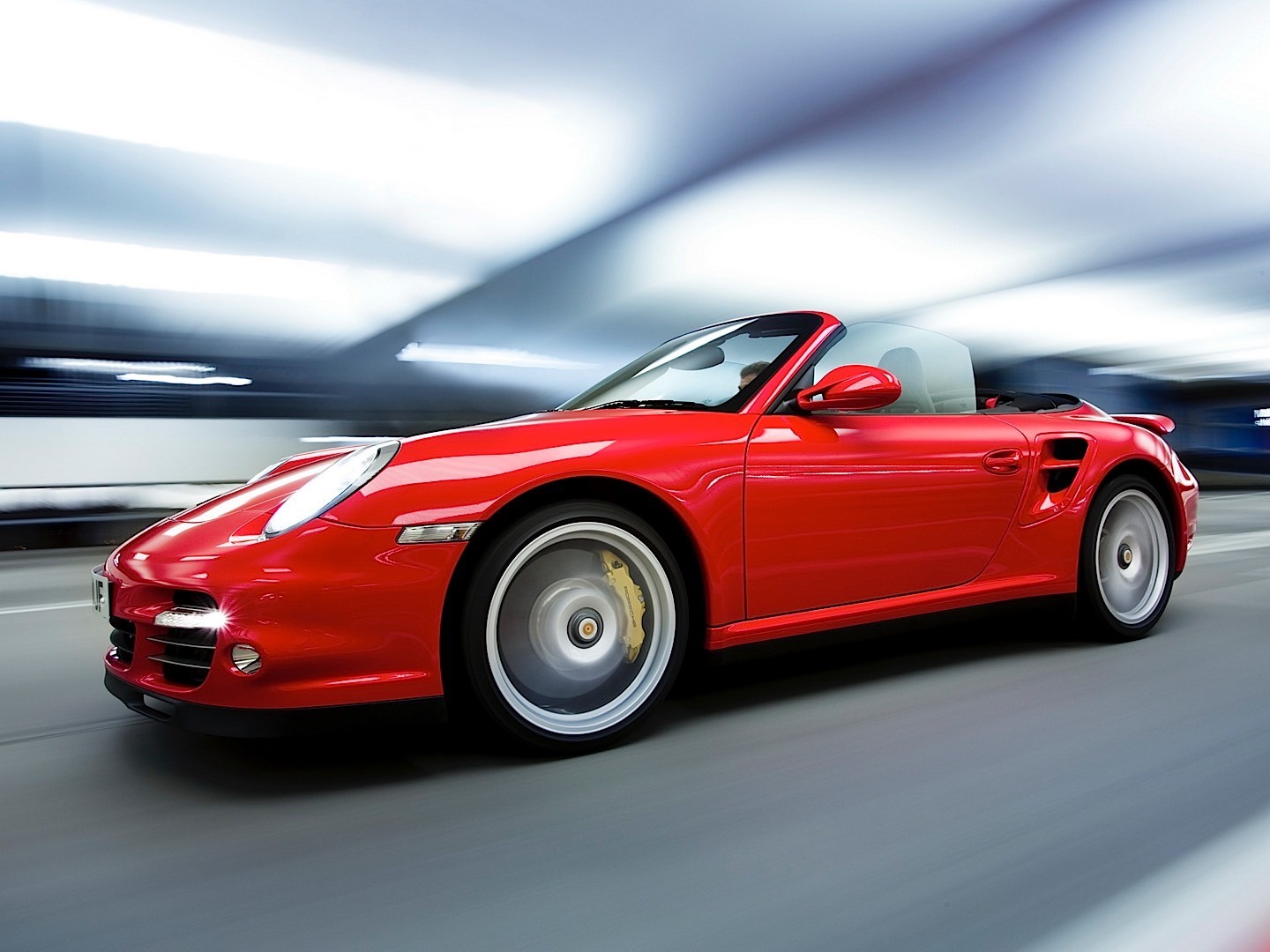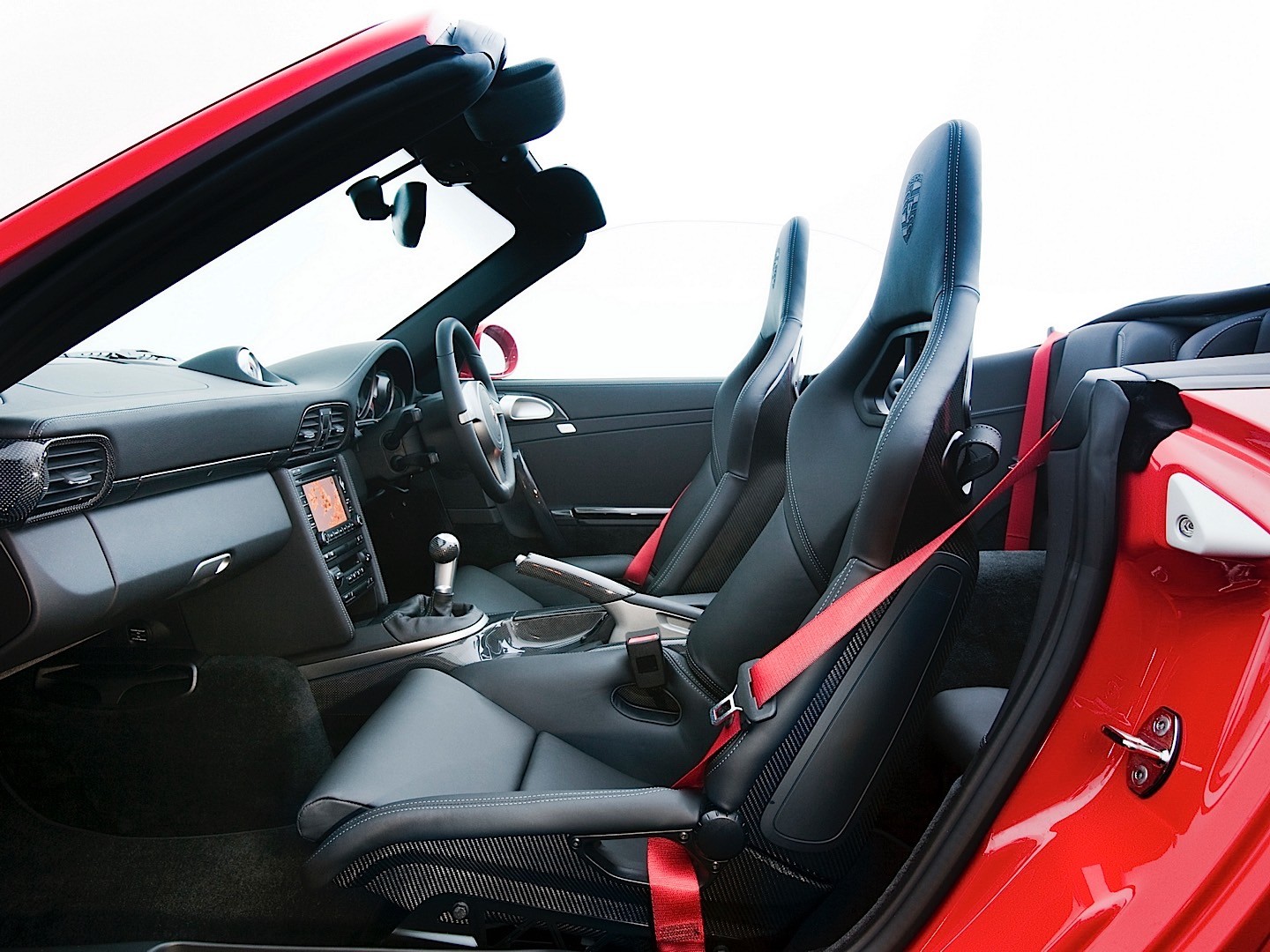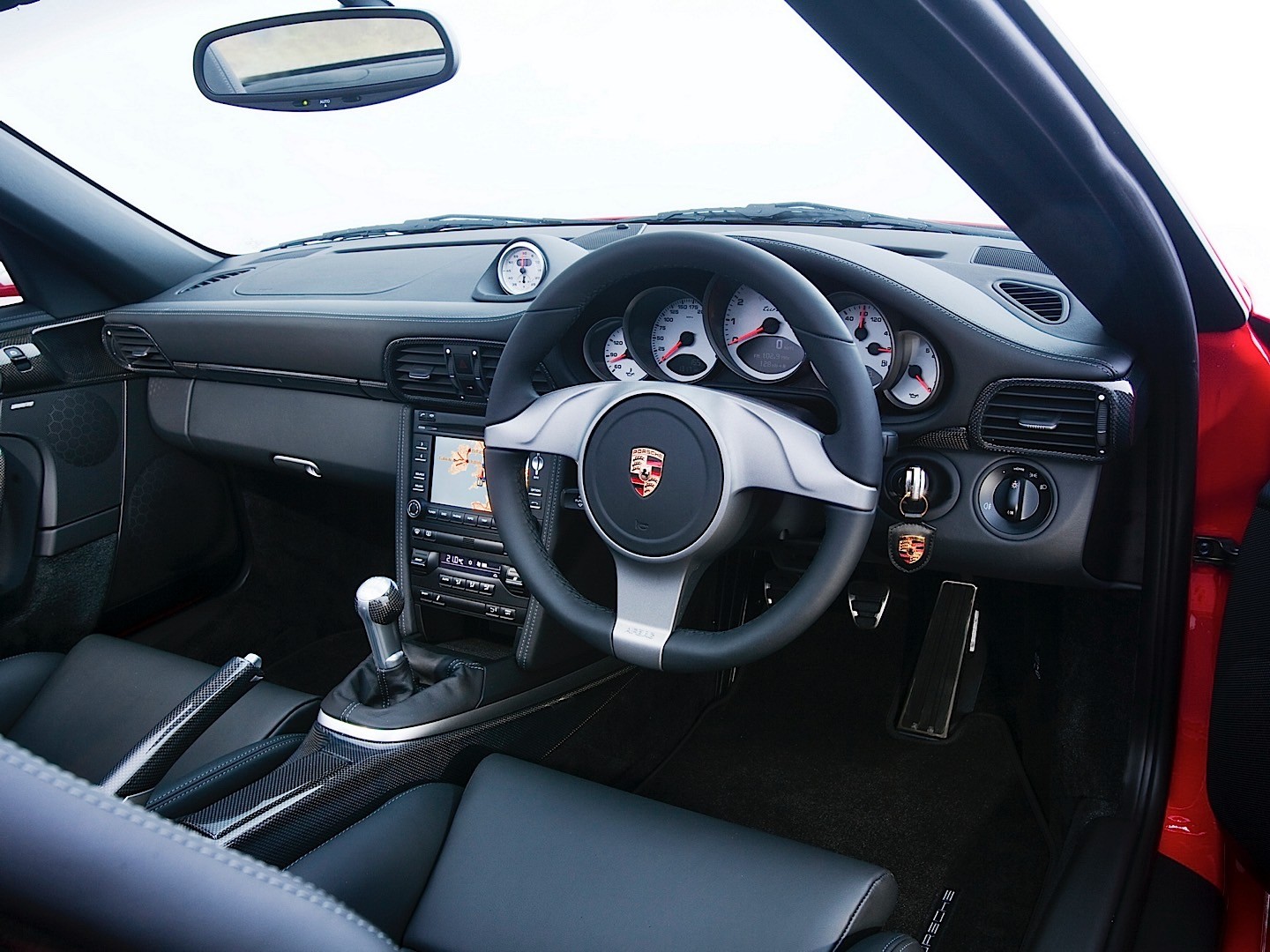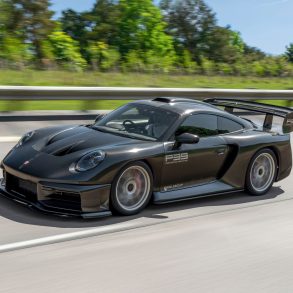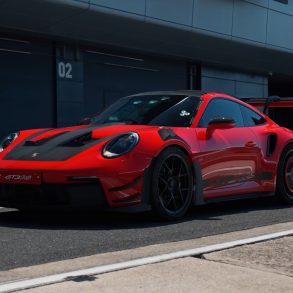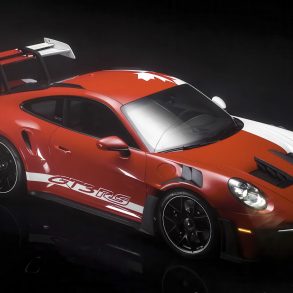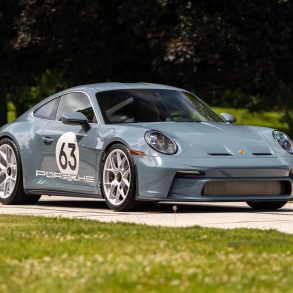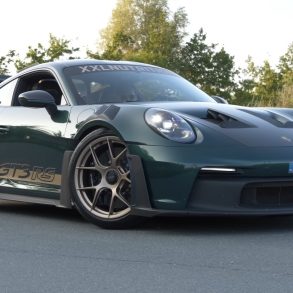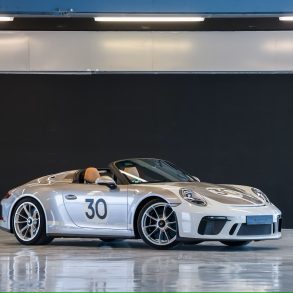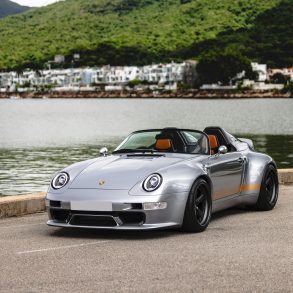(2010 – 2012) Porsche 911 Turbo Cabriolet (997.2) – Ultimate Guide
The 2010 Porsche 911 Turbo Cabriolet was launched at the same time with the Coupe version at the 2009 Frankfurt Motor Show. And its performances were in the supercar territory.
The Cabriolet was built to offer the thrills and the look of a 911 Turbo version, but with a top that could be dropped for a pleasant, relaxed drive.
For the 2010 model, the car featured large air intakes and bar-shaped LED turn-signals. In the side-scoops air intakes needed to cool the front brakes, the designer incorporated the daytime running lights with LED, instead of the usual foglights. The headlights featured optional dynamic lights that improved illumination on the bends due to a swiveling mechanism. On the upper side of the rear fenders, a twin air-intake was placed to help to cool and feed the engine with fresh air. The wing on the engine hood made an important aesthetic difference between the Turbo and the rest of the 911 models.
The first Porsche 911 Turbo Cabriolet appeared in 1975 and offered a 260 hp from a flat-six 3.0-liter engine. Fast forward to 2009 and there still 6-cylinders flat under the rear hood and the engine grew to 3.8-liter displacement. Instead of one turbo, there are two turbochargers with Variable Turbine Geometry, a feature exclusive to Porsche. It was mated to either a six-speed manual or a 7-speed PDK (Dual-clutch automatic gearbox).
Pictures
Press Release
Introducing the new Porsche 911 Turbo making its debut at the 2009 Frankfurt Motor Show, Porsche is once again setting the highest standard in the high-performance sports car segment. Indeed, the development borne out by the Turbo for greater efficiency on lower emissions as well as extra driving dynamics on less weight points convincingly into the future.
To be specific, the new top-of-the-range Porsche production sports car consumes up to 16 per cent less fuel, develops 20 bhp more power, delivers 30 Nm/22 lb-ft more torque, and accelerates up to 8 per cent faster on a reduction in weight of up to 25 kg or 55 lb – not to mention the enhanced driving dynamics offered by the car.
Given these qualities, the new top model in the 911 range stands out even more clearly than before from its competitors particularly in terms of efficiency and acceleration. The main specifications (different figures for the Porsche 911 Turbo Cabriolet where appropriate in brackets) are as follows:
3.8-litre six-cylinder biturbo horizontally-opposed power unit developing 500 bhp (368 kW); six-speed manual gearbox, optional seven-speed PDK Porsche-Doppelkupplungsgetriebe; active PTM Porsche Traction Management all-wheel drive; acceleration 0 – 100 km/h in 3.7 (3.8) seconds, with PDK and the Sport Chrono Package Turbo in 3.4 (3.5) seconds; top speed 312 km/h (193 mph); fuel consumption in the NEDC 11.6 (11.7) ltr/100 km equal to 24.3/24.1 mpg imp, with PDK 11.4 (11.5) ltr/100 km (equal to 24.8/24.6 mpg imp).
The heart and highlight of the new Porsche Turbo at the dealership in Germany as of 21 November is of course the new power unit now displacing 3.8 instead of 3.6 litres. This engine for the first time developed brand-new from the ground up in the 35-year history of the Porsche 911 Turbo comes with Direct Fuel Injection, an efficiency-enhancing expansion-type intake manifold, and a turbocharger exclusive to Porsche with variable turbine geometry (VTG) on a gasoline power unit. The result is not only an increase in output over the former model by 20 bhp to 500 bhp (368 kW), but also an increase in peak torque up by 30 Nm/22 lb-ft to 650 Nm/479 lb-ft.
As in the past, the Porsche Turbo comes as standard with a six-speed manual gearbox. As an option the turbocharged power unit may for the first time be combined with the sevenspeed PDK Porsche-Doppelkupplungsgetriebe which, unlike Tiptronic S on the former model, also comes with a limited-slip differential.
The PDK double-clutch gearbox is a further development of the transmission already featured in the 911 Carrera with reinforced components. The combination of PDK, Direct Fuel Injection and turbocharging provides a new level of efficiency, agility, response and performance, the Porsche 911 Turbo with PDK and the Sport Chrono Package Turbo accelerating from a standstill to 100 km/h in just 3.4 seconds (Cabriolet 3.5 seconds) with the help of Launch Control.
Supreme fuel efficiency: by far the most efficient high-performance sports car
Fuel economy up to 16 per cent better than the competition even under the stricter EU5 standard gives the new Porsche Turbo a unique position in its market segment. In concrete terms, average fuel consumption of the Porsche 911 Turbo with PDK is down versus the former model with Tiptronic S by 2.2 to 11.4 litres/100 kilometres /equal to 24.8 mpg imp). In overland traffic both the Coupé and the Cabriolet, thanks to PDK with its optimum gearshift and the transmission of power with minimum losses, may easily return fuel consumption of less than 10 litres/100 kilometres (28.2 mpg imp or better) (extra-urban fuel consumption to the EU5 standard: Coupé 8.1 ltr/100 (34.9 mpg imp), Cabriolet 8.2 ltr/100 km (34.4 mpg imp).
The overall balance of CO2 emissions has improved by an even greater margin, with CO2 down by almost 18 per cent thanks to the changeover from a converter automatic transmission to the Doppelkupplungsgetriebe. Emissions are also down on the manual gearbox model by approximately 11 per cent.
With the Porsche 911 Turbo already ranking right at the top in terms of efficiency, its lead over the competition is now improving dramatically once again. Indeed, the Porsche 911 Turbo is the only car in its segment to remain below the Gas Guzzler Tax limits in the USA, that is the additional tax imposed on vehicles with heavy fuel consumption.
Top performer also in acceleration and driving dynamics
Even with its manual gearbox featured as standard, the new Turbo accelerates from a standstill to 100 km/h in just 3.7 seconds (Cabriolet 3.8 seconds). With the PDK gearbox the new Turbo completes the same exercise another tenth of a second faster, and with the optional Sport Chrono Package Turbo featuring dynamic engine mounts for the first time, the top-ofthe- range 911 offers an even higher standard of performance still, the integrated Overboost function increasing maximum torque by 50 Nm/37 lb-ft to no less than 700 Nm/516 lb-ft.
This means acceleration from 0 – 100 km/h with the Sport Button pushed in just 3.6 seconds (Cabriolet 3.7 seconds) and, in combination with PDK, the Sport Plus Button and Launch Control, the fastest conceivable acceleration to 100 km/h is in a staggering 3.4 seconds (Cabriolet 3.5 seconds).
In the same mode acceleration to 200 km/h or 124 mph takes just 11.3 seconds (Cabriolet 11.8 seconds).
As a yet further highlight, the Sport Plus Button on the PDK gearbox activates the Race Track Gearshift Strategy with the shortest conceivable shift times and optimum gearshift points when shifting up and down.
To provide yet another improvement of both driving dynamics and motoring/vibration comfort, the Sport Chrono Package Turbo also comes with dynamic engine mounts changing their stiffness and damping as a function of driving conditions. This special feature significantly reduces the transmission of vibrations from the entire drivetrain and, in particular, from the engine to the body of the car.
New: Porsche Torque Vectoring PTV for even higher speeds in bends
The performance of the new 911 Turbo enhanced to an even higher standard goes hand in hand with driving dynamics even more outstanding than ever before. Accordingly, the further development of PTM Porsche Traction Management all-wheel drive and PSM Porsche Stability Management for even greater driving dynamics is supported by new, optional Porsche Torque Vectoring (PTV).
This innovative system comprises a mechanical rear axle differential and, intervening in the brakes on the inner rear wheel in a bend as required, enhances the agility of the car while reducing any tendency to understeer. The result is even greater steering precision and stability in bends, together with higher speeds on bends and winding roads.
PTM Porsche Traction Management now comes with an even higher standard of driving dynamics, the change in power distribution from front to rear taking place even more smoothly. The big advantage for the driver is the very well balanced and forgiving behaviour of the car.
PTM communicates in the new Porsche 911 Turbo with Porsche Stability Management likewise featured as standard. PASM Porsche Active Suspension Management, in turn, gives this unique high-performance sports car another active control system for optimum driving dynamics. Masterminded by a computer, this sophisticated damper technology benefits from the interaction of PTM and PSM by providing even more dynamic control. The driver is able to choose in this process among the Normal and Sport Mode, with the continuous damper adjustment following a more comfort-oriented or sporting and firm control map. As a result, the driving behaviour of the Porsche 911 Turbo adjusts flexibly to the individual wishes of the driver.
A fundamental point of Porsche’s safety philosophy is that brake power must always exceed engine power several times over. Precisely this is why the front wheels come with six-piston swing-calliper disc brakes measuring 350 millimetres or 8.9″ in diameter. The four-piston swing-calliper brakes at the rear also come with discs measuring 350 millimetres across.
Like all models in the 911 range, the new 911 Turbo is also available with PCCB Porsche Ceramic Composite Brakes with ceramic discs measuring 380 millimetres/9.6″ in diameter at the front for even faster response, very good resistance to fading and absolutely no corrosion. A further advantage of PCCB is the reduction of weight versus the standard brakes with grey-cast iron discs by approximately 18 kg or 40 lb.
New features in design
A characteristic feature of the most powerful production 911 is the front apron with large cooling air intakes and bar-shaped LED direction indicators. New features are the titanium coloured louvers in the side air intakes and LED daytime driving lights replacing the conventional foglamps.
Available for the first time as an option on the new Porsche 911 Turbo, dynamic bending lights improve illumination of bends in the road ahead by the headlight module following the course of the road by swivelling in their angle up to 15°. Indeed, the sophisticated design of this doublelens projection system bears out the progressive and striking character of the new 911 Turbo most convincingly.
In their new design, the double-arm exterior mirrors offer a better view to the rear and provide optimised aerodynamics with the mirror glass better protected from dirt.
Nineteen-inch Turbo II wheels in forged technology and twin-tone looks featured as standard on the new Porsche 911 Turbo provide a particularly appealing touch in terms of style and design. The rear view of the new Porsche 911 Turbo is even more powerful and muscular, not only on account of the classic split wing, but also and above all due to the newly designed rear lights in LED technology and the much larger tailpipes.
The latest generation of the top 911 in the range also comes with a new generation of steering wheels. Models with the manual gearbox feature a new three-spoke sports steering wheel in modified design as standard. Cars with the Porsche-Doppelkupplungsgetriebe are available for the first time as an alternative to the PDK steering wheel featuring its proven shift buttons with a new, optional three-spoke sports steering wheel complete with gearshift paddles.
These shift paddles are fitted firmly on the steering wheel, the right paddle serving to shift up, the left paddle to shift down.
In conjunction with the optional Sport Chrono Package Turbo both the paddle and the PDK steering wheel come with push buttons and integrated displays. As a function of the button pressed, either the “Sport” or the “Sport Plus” light will switch on. And if the driver has activated Launch Control, this function is also shown.
On the PDK steering wheel these displays are housed in an additional binnacle above the airbag module, on the new sports steering wheel with its gearshift paddles in the right and left double spoke.


